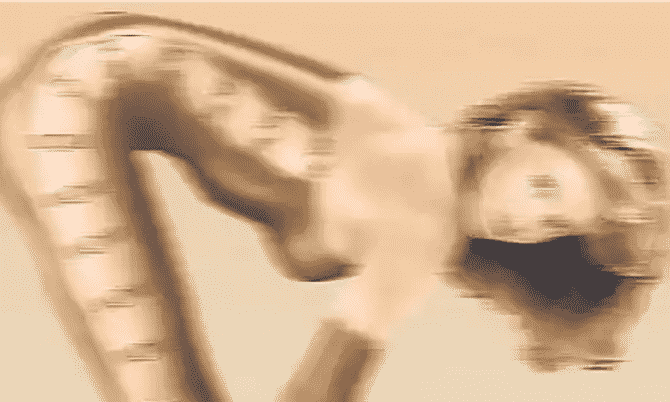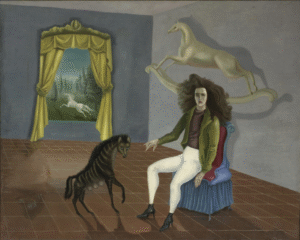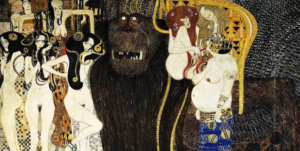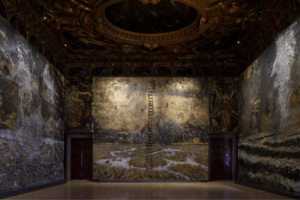In Nudes, Prudes, and Attitudes, we ask:
Why does art nudity occupy a special place in the cultural consciousness?
Perhaps the fascination or rather, the tension we feel when faced with nudity in art is that many have a primal instinct to associate nakedness with eroticism. And that any nude body is always somehow a prelude to a sexual encounter.
Many accept this natural reaction and instinctive curiosity while others look away, ashamed as though appreciating the naked form is somehow sinful, from historical censures and strictures from most religions.
Rarely will people view a nude sculpture or painting and comment on its anatomical form and aesthetics. Instead, they create a special place in their mind, attempt to analyze the artwork to glimpse how sexual desire and sensuality the artist intended reveals itself through other elements.
However, with erotic art, the intention is clear. Not to be confused with pornography, erotic art intends to evoke erotic desire through elements of art such as paintings, drawings and sculptures.

Naked History and The Masters of Great Erotic Wave
Historically, many cultures have created erotic art. Some date as far back as the Paleolithic period where cave paintings and carvings weren’t just of hunting scenes but women with large breasts and hips and graphic depictions of genitalia.
The ancient of Peru in South America sculpted sex scenes into their pottery, and in fact, there is an entire gallery of erotic ceramics from the Moche culture that exists in Lima at the Larco Museum.
The Pompeiian erotic wall paintings have their own fascinating history. Considered pornographic when they were first unearthed in the 18th century, they were locked away. Eventually, viewing of the paintings that depict explicit sex scenes, indicating the services of prostitutes in a Pompeii brothel, would be available to the wealthy. Today, the artwork is open to the public.
One of the most controversial works of erotic art (“shunga” in Japanese) is Hokusai: The Dream of the Fisherman’s Wife from 1814. A woman is entwined with two octopus; one kisses her on the mouth while the larger one performs cunnilingus. It is one of the first known depictions of tentacle eroticism, a popular Japanese hentai genre where tentacled creatures would perform sexual acts on young women. It is believed that this genre was created as a way to still evoke eroticism and get around the Japanese censorship of the depictions of the penis.

Hide and Seek
Today, erotic art is still disrupting “proper” society. In fact, Gustave Courbet’s 1866 L’Origine du monde (“The Origin of the World”) caused a scandal only six years ago when the oil painting of a close-up view of the genitals and abdomen of a naked woman, lying on a bed with legs spread made its rounds on Facebook. After Facebook took down a reported post of it by a Copenhagen artist, Facebook users changed their profile pictures as a show of solidarity for the censorship.
Despite the long history of erotic art that has been created throughout the world from India, Japan, China and eventually Europe, it’s never quite been perceived as socially acceptable or respectable. And many of the most controversial erotic art are tucked away in private collections or displayed in museums and understandably, only for adult consumption.
You will find Robert Mapplethorpe: Jim Sausalito, 1977 in the Getty Museum. Egon Schiele: Woman With Black Stockings, 1913 was at the Courtauld Gallery, London, until 18 January 2015 and is now in a private collection. Balthus: The Guitar Player, 1934 is also part of a private collection. Great current examples would be the well-collected and respected German artist Thomas Ruff and ongoing series of Nudes photography that were taken from porn sites. At their artistically “blurred” best and the precise imprecision in these explicit nudes, perhaps the blurred line and admiration we seek between “soft porn” and great artwork lives.

Artistically Indecent and Morally Apart
Over the generations, erotic art was often deemed as pornography, and these “indecent” manifestations were banned from the public or destroyed. And in modern times, erotic art has a massive worldwide audience. But who decides if it is true art or just X-rated material trying to pass off as art?
Today, erotic art can easily be deleted from our social media accounts if someone naive enough is unable to distinguish the difference between pornography and art and chooses to issue their concern. Whether culturally or religiously constructed, our society’s reaction and the art world’s acceptance and enjoyment to erotic art still seems to be quite far apart, given their propensity to see the world in entirely different ways.







